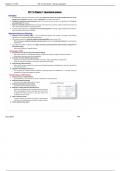Exam (elaborations)
INF 112 Exam Review Questions and Answers 2024/2025
- Course
- Institution
INF 112 Exam Review Questions and Answers 2024/2025/INF 112 Exam Review Questions and Answers 2024/2025/INF 112 Exam Review Questions and Answers 2024/2025
[Show more]



